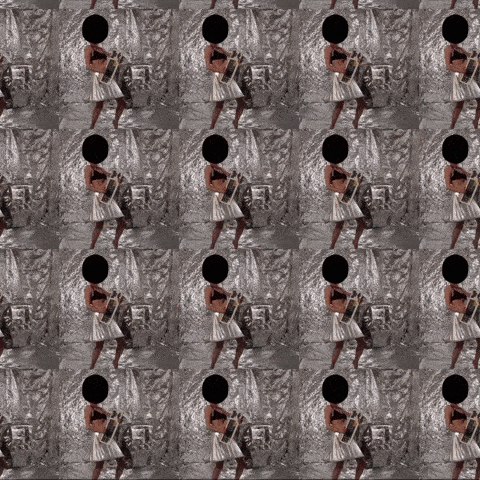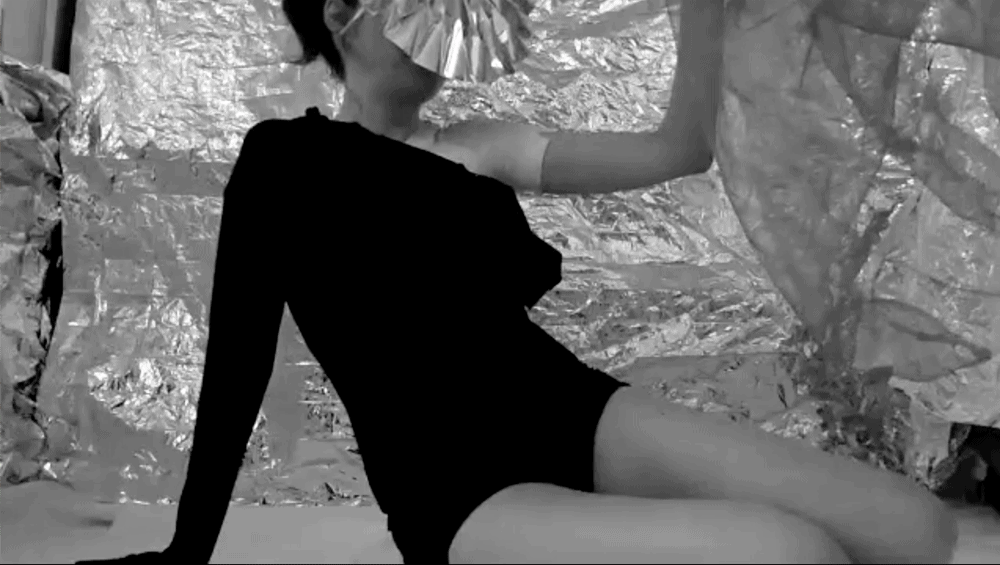Tusia Dabrowska has a collaborative practice in sound, video, and performance. She tells stories that interrogate transformation, engage with technology, and create site-responsive immersions. She reconstructs the narrative as an experience, imagining it as a spatial audio/visual constellation. Her work is often site-specific, devised, collaborative, and hybrid. It is also exuberant.
Her project, “The Money Making Machine,” comprises of six digital assemblages that during April 2020 were delivered directly to e-mailboxes and are now available online here. The works ask how much or how little it takes to panic when our work is reduced to sitting in front of a computer.
For these works, she was guided by the assemblages of two Polish Jewish female avant-garde artists, Erna Rosenstein and Krystiana Robb-Narbutt. “The Money Making Machine” series was produced in April 2020 as part of mhPROJECT’s first digital residency.
How did you find out about the residency programme? How did you apply?
mhPROJECT is Mayumi Hayashi’s project space in East Village in New York. Hayashi used to work for the International Studio & Curatorial Program (ISCP) where she managed the residency and exhibition programs, and before that, in the mid-1990s and early oughts, she’d co-founded Goliath Visual Space, one of the first artist spaces in Greenpoint. Mayumi is ingrained in the North Brooklyn artist community and the community of artists who experiment with technology in their work. At mhPROJECT, she also presents installations and performances. This opportunity came about in a very organic way—I thought the work shown there is really good and the place is tiny, so it was not hard to meet Mayumi. Anyway, she is always doing studio visits and looking at new work that artists share with her. For example, one of the first times we met, she and I drove to visit an artist friend in her studio in NJ. (Always be prepared to talk to a curator about your work for three hours!)
What does your regular art residency day look like?
This is a very unusual time. It is May 2020, and NYC is under a lockdown since mid–March, so I am actually working from home. I talk about it more below, but here I will focus on my process. In the last week of my residency, I worked on a new video. My regular schedule was like this: warm up for about two hours, run tests for three hours. Take a long lunch break. Go back to work around 4pm and work till bedtime. Also, when I’m away at a residency, I get flaky with emailing and texting back. You will not hear from me for a while and then five days later, you’ll get a from me or something. 

Tusia Dobrowolska, In My Office
In your experience, what distinguishes working as part of residencies from working in your atelier? Does the change of context help you in the creation process?
Since January 2020, Mayumi and I have talked about me kickstarting mhDIGITAL. In most cases, I think, a digital residency is less about changing the physical context and more about the time/resources/money that an institution invests in your work, and Mayumi made sure to provide me with the same support she gives to the artists she shows in the physical space.
This came at a particularly difficult time for our city; thankfully, my family and I are safe and healthy, but the lockdown is pretty difficult. Because of that it was very important to have this residency, a curator who supports this project, and collaborators, such as Wanda Gała or Ewa Pawlik, who were willing to devote their time and work during this crisis to help me put these assemblages together. It also helped that I was already thinking about Erna Rosenstein and Krystiana Robb-Narbutt both of whom had home studios, so this was something that was already on my mind. (I normally work out of spaces provided by the university where I teach.)
That said, I want to go back to the issue of context. The last assemblage I created was a 360 video called “I can’t click anymore”. To film it, I had to set up a white box in my room (OK, I used space blankets and shower curtain liner fabric), but I had to rearrange furniture, and for 5 days I experienced my own space in a very different way. I’m sure it’s a familiar experience for many of your readers, but there is that moment when you enter your residency studio for the first time, and it’s completely empty and there is so much potential that just makes you want to experiment. So, I tried to recreate that feeling for myself.
Do you place an emphasis on your work or rather on meeting people and exploring the city?
One of the benefits of meeting Mayumi and collaborating with mhPROJECT was a chance to meet artists like Maki Kaoru or Joseph Moore. It’s always nourishing to be exposed to artists with diverse digital practices and to see their process up close, to get a more complete sense of their practice, and learn how they make things work in New York. However, this time there was no opportunity to connect with anyone.

Tusia Dobrowolska, out-take
What challenges and opportunities did the residency involve?
External circumstances of the pandemic were obviously the main challenge and all other issues paled in comparison.
In terms of opportunities that this residency created, I had a chance to collaborate with the choreographer, Wanda Gała. Of course, it was over Zoom, and it’s a strange experience to work on movement when your movement designer is about 3 inches tall and flat on a computer screen and there never seems to be that perfect spot where we can both see each other’s full bodies and hear each other well. But Wanda’s process is very analytical, so it was a lot of fun to hang out with her, to learn from her, and to connect with another artist whose liminal identity as Polish and American informs her critical perspective on gender, futurity, and economic structures.
Although I had some help from my usual collaborators on sound design, I was responsible pretty much for every aspect of the production process, in a context where, for obvious reasons, I had a very limited access to materials and equipment. It was good to immerse myself in the production of this video. I literally created a little silver cocoon for myself, a safe space and a temporary reprieve from worrying about my city (in the immediate), and my own future as an artist in the coming recession.
Name three objects which are the most important to you during the residency.
external drive; soup; hula hoop
What would you recommend to artists going abroad for an art residency?
If you’re coming to NYC, bring more money.












